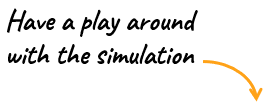
Love innovations in physics teaching?
Get 12 months free access to Electricity Explained in return for feedback
Will your students understand circuits better with our simulations?
Students find ideas like voltage, current, and power really hard to visualise. Innovative teachers care about the impact on the student learning experience just as much as they care about the impact on their current way of teaching.
Eighteen lessons covering the whole KS3/4 current electricity syllabus
Innovative teachers like to get the physics right for its own sake.
Electricity Explained uses only 11-16 concepts in a way that enriches the syllabus, rather than expanding it.
Flex to your own style in front of a class, or as self-paced lessons
Simulations and animations
For whole-class teaching
3-minute videos
For the classroom or for home learning
Online quizzes
Based on the visuals you’ve used to teach
Familiar topics founded on a deep understanding of circuits
It’s easy to deliver the syllabus you already use, but there’s a lot under the hood to help teachers develop their own understanding of circuits.
Why I need your help
I’ve thought very hard about teaching and learning electricity for over twenty years, and I’m still developing my ideas.
Furry Elephant - Electricity Explained’s predecessor - was used by hundreds of schools all over the world, and this new version is tighter and easier to use in the classroom, but sacrifices none of the depth that FE fans loved.
I’ve run CPD for the IoP and ASE, and was a subject matter expert reviewer for the OUP. But I’m not a classroom teacher any more, and so I need feedback from the chalk face about what works and what doesn’t.
This is me - Julian Hamm - at home in Devon.
Okay, that sounds interesting - tell me more
FAQ
-
The idea is for you to have all the time you need to understand the impact of Electricity Explained in the classroom, and for me to understand your feedback. I’m flexible about exactly how long that is, but I’m assuming an academic year is about right.
-
As many as you like, but you don’t need to feel that the whole department needs to try out Electricity Explained all at once.
-
Whatever works for you - I value your time, so I don’t want to make the process burdensome. I’m thinking swapping some emails, and probably a Zoom call.
-
You’re welcome to take out a paid subscription if you want right now - and obviously, if EE is right for you and your students then I hope you become loyal subscribers - but what I need early on is teachers using EE in class, seeing the impact on their students, and then letting me know. There’s lots of stuff that EE does for free, so you don’t ever need to subscribe.
-
Absolutely. I already work closely with a small number of universities and SCITTs. Beginning Teachers often need support understanding and teaching electricity (I know I did!), so EE is an excellent way to gain valuable subject knowledge.
Innovative teachers may enjoy these unique insights
Why the rope loop is not great at predicting circuit behaviour
It’s claimed that the rope model has predictive powers - the problem is that in almost every case it predicts the exact opposite of how real circuits behave…more
Electrical ‘resistance’ is only a metaphor
The idea of electrical resistance is a horrible concept, and causes no end of confusion, though people are rarely aware that they’ve been confused. It’s one of the main…more
Battery voltage and the invisible 4th Law of electric circuits
When we have a simple circuit and we change the resistance, most teachers will simply say that you use the I=V/R relationship to calculate the new current…more
How batteries decide their chemical reaction rates
Batteries change the rate their chemical reactions run at depending on what they’re connected to - but how do they know what rate that should be?…more
Do charges ‘really’ carry energy?
They may or may not, but it really helps explain voltage and power if you pretend they do, and make this pretence explicit…more







